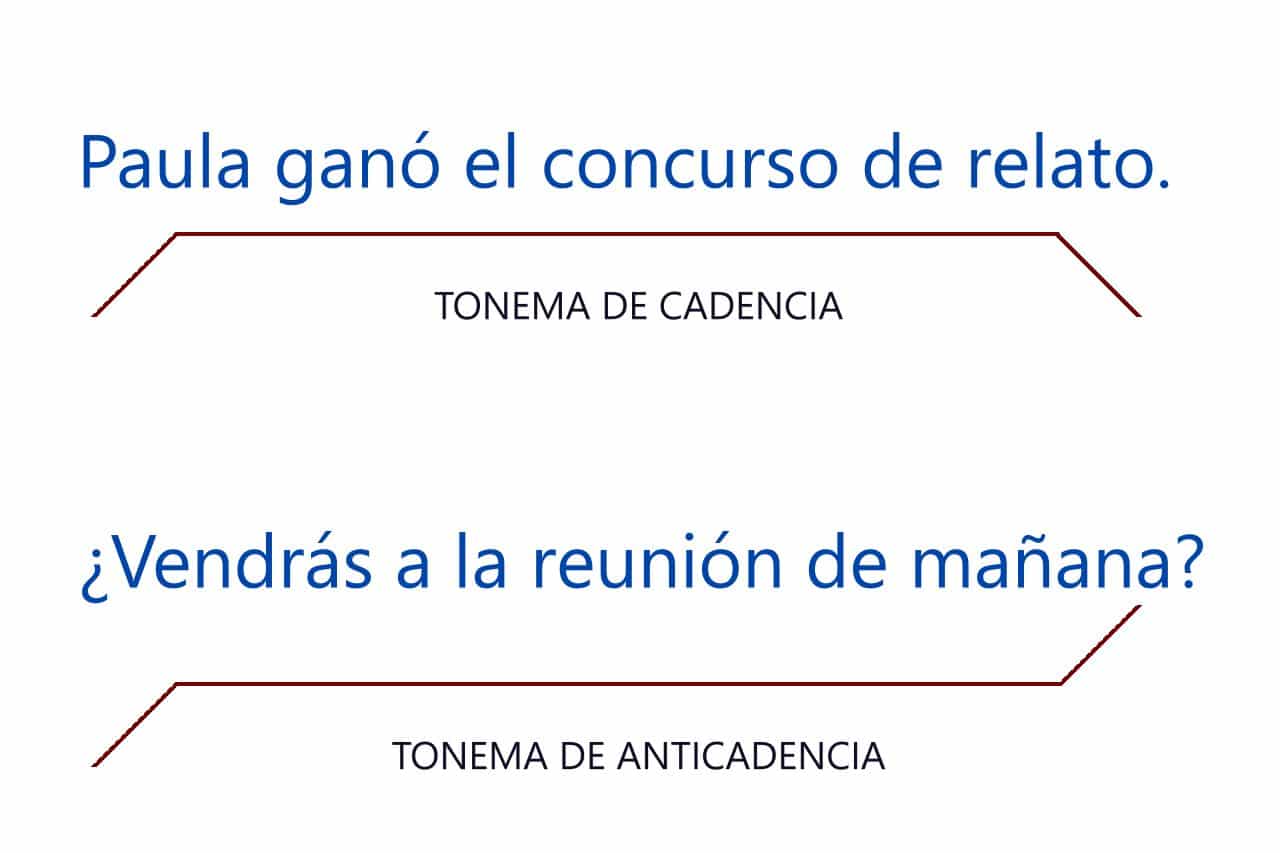
A tone of cadence and one of anticadence
The toneme is the inflection that a melodic unit adopts after the last accented syllable . It is a concept that is part of the field of phonetics . It is possible to distinguish between different kinds of tones according to their characteristics.
an inflection
Inflection is an attenuation or elevation of the voice that allows certain grammatical content to be encoded. This concept is essential to understand tonema, since the latter is in itself an inflection. To be more precise, it is one that is recorded in a melodic unit .
The latter is delimited by the appearance of a discontinuity in the rhythmic or melodic pattern. In this case, it is the melodic unit that develops after the last stressed syllable .
It can be said that the toneme is the intonation (the melodic movement that is reflected when pronouncing a statement) that, in relation to a phonic group, acquires the final section of the melodic curve , which, given by the specific succession of unstressed syllables and tonic, defines its distinctive feature from the toneme.
A toneme, in short, is a central element of intonation . It is important to indicate that intonation has an impact on the meaning of statements and the transmission of emotions and moods.
Tone width
The tonema can have a variable amplitude and be descending, ascending or horizontal. According to the Spanish philologist Tomás Navarro Tomás ( 1884 – 1979 ), we can differentiate between the suspension toneme , the anticadence toneme , the semianticadence toneme , the cadence toneme and the semicadence toneme , each with its own endings .
The cadence tone is the one that serves to mark the end of an affirmative sentence , without exception. Its direction is definitely descending, and in fact it is the one that reaches the lowest level of the five types of tonemes according to their amplitude. For example: "Paula won the story contest" ; is intoned conclusively. At the opposite extreme we have the anticadence tone , which is characterized by a marked tension; It can denote opposition of ideas, a contrast with what was said previously or also the concern inherent to a question . His tone is the highest of all: “Will you come to the meeting tomorrow?”

The intonation of the tones can be descending, flat or ascending.
In the center we have the suspension tone , which does not register any variation in the pitch of the sound, that is, its intonation is flat. It serves to present the first part of an idea that is just completed by inserting another one below. When we express a decision, for example, and we want to give the interlocutor one or more reasons that support it, we usually affirm it, pause (generally represented by a colon) and then present these reasons at the end. Up to the two points, the tone is one of suspension: "I have decided to stay: I do not want to miss its last days" ; The first three words are read with an intonation that does not have ups and downs.
Then we have the semi-cadence toneme , which exhibits a lower intonation drop than the cadence tone in its melodic line. It can be used for a statement with a lack of security, with doubts, that does not have sufficient determination . Detecting this type of tone and distinguishing it from cadence is relatively difficult, since the difference can be subtle. In the sentence "Cats have better hearing than dogs" , if the speaker lacks technical knowledge, he will probably use this intonation at the end, since he is not absolutely sure of what he is saying. Finally, the semi-anticadence tone continues the main idea and can oppose or contrast it: "But do you really plan to sell everything?" ; the intonation denotes concern about possible consequences.
